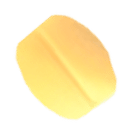Constipation can be a frustrating and uncomfortable experience. Many people turn to polyethylene glycol (PEG) as a solution, but there are more natural and effective alternatives. Understanding how these alternatives work and why they might be better for your digestive health can help you find relief without unwanted side effects.
The Problem with Polyethylene Glycol (PEG)
What Is PEG?
Polyethylene glycol (PEG) is a common ingredient in over-the-counter laxatives and is often recommended for constipation. It works by adding water to the bowel, which helps to soften stool and make it easier to pass.
Why It Might Not Be Ideal
- Emulsification Issues: PEG acts as a surfactant, which means it helps break down substances but can also disrupt the mucous lining of the gut. This can lead to inflammation and irritation in the digestive tract.
- Inflammation and Recurrence: The inflammation caused by PEG can sometimes lead to more bloating and discomfort, creating a cycle where you may need to use PEG more frequently, potentially leading to nutritional deficiencies and further digestive issues.
- Plastic Concerns: PEG is also used in the manufacturing of plastics, which raises questions about its long-term effects on health, despite assurances of its safety.
Natural Alternatives to PEG
Instead of relying on PEG, consider using more natural solutions that support digestive health without causing irritation.
1. Inulin
What Is Inulin?
Inulin is a natural, plant-derived sugar found in chicory root. It acts as a prebiotic, helping to nourish beneficial gut bacteria and support overall digestive health.
How It Works
- Osmotic Effect: Inulin helps draw water into the bowel, similar to PEG, but does so in a way that is more gentle on the digestive system.
- Supports Gut Health: By promoting the growth of healthy gut bacteria, inulin can help improve digestion and regularity over time.
2. Oat Soluble Fiber
What Is Oat Soluble Fiber?
Oat soluble fiber, found in oats, is known for its ability to add bulk to the stool and improve bowel movements.
How It Works
- Bulk Formation: Oat fiber increases the bulk of the stool, which helps stimulate peristalsis (the movement of the intestines) and promotes regular bowel movements.
- Soothing Effect: Oat fiber is less likely to irritate the digestive lining compared to PEG, making it a gentler option for those with sensitive stomachs.
Combining Inulin and Oat Fiber
To effectively manage constipation without the drawbacks of PEG, consider combining inulin with oat soluble fiber:
- Inulin: Provides the osmotic effect needed to draw water into the bowel and support gut health.
- Oat Soluble Fiber: Adds bulk to the stool and supports regular bowel movements without the irritation associated with PEG.
How to Use These Alternatives
- Daily Intake: Incorporate both inulin and oat fiber into your diet daily. They can be found in various supplements or added to foods like smoothies, oatmeal, or yogurt.
- Gradual Introduction: Start with a small amount and gradually increase to allow your digestive system to adjust.
Constipation can be managed effectively with natural alternatives to polyethylene glycol. Inulin and oat soluble fiber offer gentle, effective solutions without the risk of irritation or inflammation. By incorporating these into your routine, you can promote better digestive health and reduce the need for manual interventions. Always consult with a healthcare provider before making significant changes to your diet or supplement regimen to ensure they are appropriate for your individual needs.












